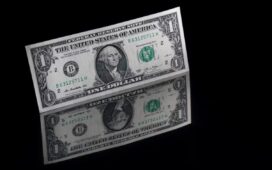Explore expert forecasts and trade setups for USD/JPY in our latest market analysis here.
Aussie Dollar Under Pressure Amid Economic Jitters
Shifting focus to the AUD/USD pair, President Trump’s tariff policies continue to weigh on Aussie dollar demand. Given Australia’s trade-to-GDP ratio exceeds 50%, higher tariffs could disrupt global trade terms, dampening AUD/USD demand.
On Thursday, weaker labor market data may have reflected tariff-related economic uncertainty. With 20% of Australia’s workforce in trade-related jobs, slowing global demand could hurt wage growth, consumer spending, and inflation. A weakening labor market could lead to a more dovish RBA, pushing AUD/USD toward $0.62500.
However, easing tariff concerns may revive Aussie dollar demand, potentially driving the AUD/USD pair toward $0.63500.
On March 21, investors should also monitor stimulus-related news from Beijing, as China accounts for one-third of Aussie exports.
Potential AUD/USD Scenarios:
- Bullish: Easing trade tensions and fresh stimulus from Beijing may send the AUD/USD pair toward $0.63500.
- Bearish: Escalating tariffs and disappointing stimulus measures could send AUD/USD toward $0.62500.
For a comprehensive analysis of AUD/USD trends and trade data insights, visit our detailed reports here.
Australian Dollar Daily Outlook: Fed Speakers and Tariffs
Later in the US session, FOMC member commentary and tariff developments may influence the US-Aussie rate differential. FOMC member support for an H1 2025 rate cut could narrow the rate differential in favor of the Aussie dollar. In this scenario, the AUD/USD pair could move above the 50-day EMA, bringing $0.63500 and the $0.63623 resistance level into play.
Conversely, concerns about inflation and positive sentiment toward the US economy may temper bets on a June Fed rate cut, sending AUD/USD toward $0.62500.
While Fed speakers will influence AUD/USD trends, an escalation in the US-China trade war remains the biggest downside risk.





